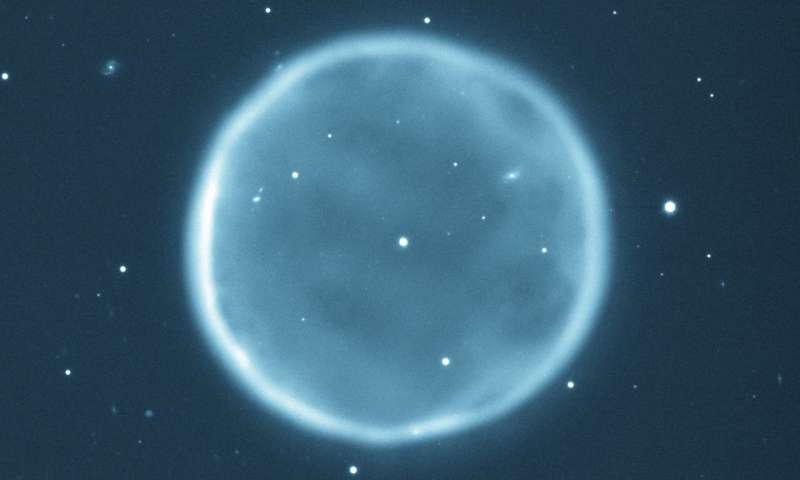What Happens After Our Sun Dies
As all astronomers know very well, our sun is a star of low mass and is predicted to die after 10 billion years. But what happens after it dies?
Briefly, when any star reaches death, it emits a mass of gas and dust (its envelope) into space in which the star's core is revealed. This hot core leaves the star shining for about 10,000 years more. Thus our sun will form bright planetary nebulae after death.

Abell 39, the 39th entry in a catalog of large nebulae discovered by George Abell in 1966, is a beautiful example of a planetary nebula. It was chosen for study by George Jacoby (WIYN Observatory), Gary Ferland (University of Kentucky), and Kirk Korista (Western Michigan University) because of its beautiful and rare spherical symmetry. This picture was taken at the WIYN Observatory's 3.5-m (138-inch) telescope at Kitt Peak National Observatory, Tucson, AZ, in 1997 through a blue-green filter that isolates the light emitted by oxygen atoms in the nebula at a wavelength of 500.7 nanometers. The nebula has a diameter of about five light-years, and the thickness of the spherical shell is about a third of a light-year. The nebula itself is roughly 7,000 light-years from Earth in the constellation Hercules. Credit: T.A.Rector (NRAO/AUI/NSF and NOAO/AURA/NSF) and B.A.Wolpa (NOAO/AURA/NSF)
Reference: https://phys.org/news/2018-05-sun-dies.html
Hi, I found some acronyms/abbreviations in this post. This is how they expand: